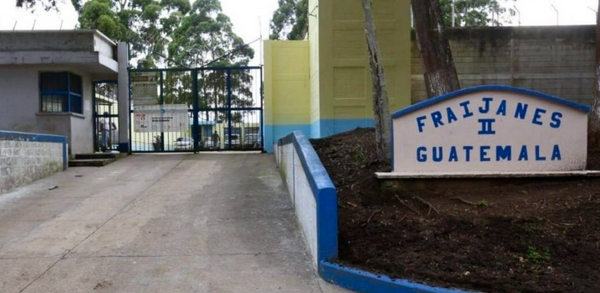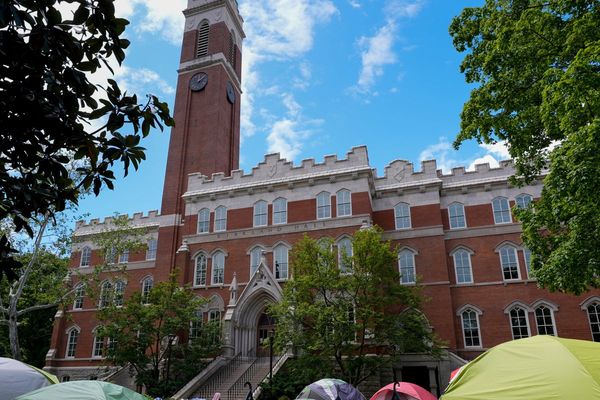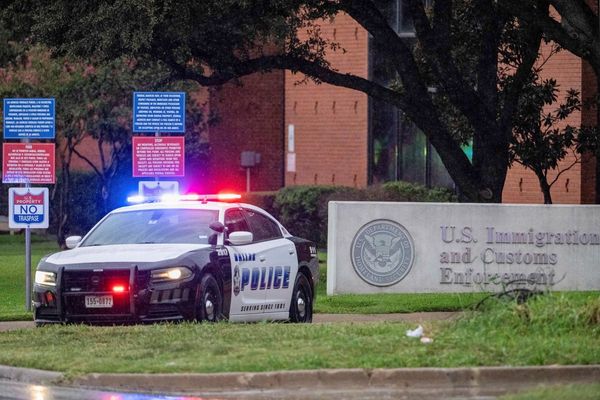The Marines struggled in seesaw battles with Japanese forces on Guadalcanal in January 1943. So the Army's chief of staff, George Marshall, called in the big guns: Maj. Gen. Alexander "Sandy" Patch.
Marshall summoned Patch (1889-1945) to turn the tide with the XIV Corps. After a month of jungle warfare, the enemy retreated, never to return. Patch later headed up a major part of the amphibious landing of Allied forces on the beaches of southern France during Operation Dragoon in August 1944. Then as a lieutenant general commanding the Seventh Army he pushed the enemy back from their strong entrenchments in the Vosges Mountains during winter and pushed on into southern Germany.
"General Alexander Patch was one of World War II's most underrated and almost unknown U.S. Army commanders," Patrick O'Donnell, author of "The Indispensables," told Investor's Business Daily. "He is one of a tiny group of generals to fight in three theaters: the Pacific, Mediterranean and Europe."
Patch, though, did earn the four-star general rank roughly a decade after his death at age 55. "He understood that the Army's most significant resource was its personnel, and he was effective as a leader because he understood his men and how to lead them, protecting them and sharing their hardships at the front," O'Donnell said. "He won their admiration and this helped them achieve repeated victories on the battlefield."
Learn And Train For Greatness
Patch was born in 1889 at Fort Huachuca, Arizona Territory. His father was a cavalryman who was injured during the Indian Wars and retired two years after "Sandy" was born. That's when the family moved to Lebanon, Pa.
Patch joined West Point in 1909, where he was admired for refusing to join upperclassmen in their humiliation of plebes or to curry favor from his superiors. Nonetheless, Patch graduated near the bottom of his class.
Patch's first assignment in the infantry in Texas was patrolling the border with Mexico. That included an expedition against Pancho Villa's revolutionary army in 1916. During the operation, Patch's superiors noted "a promising ability and sense of professional judgment," wrote Keith E. Bonn in "Most Underrated General of World War II: Alexander Patch" on the Marshall Foundation website.
Push Your Skills Further
As a captain the next year, Patch and his regiment joined the American Expeditionary Forces on the Western Front. He then trained in Britain's Machine Gun School, commanded a U.S. machine gun battalion, and directed the Americans' Machine Gun School.
He was well-prepared to lead a battalion of the 18th Infantry Regiment as a lieutenant colonel for the final battles of the Great War in October 1918 at Marne, Saint-Mihiel, and the largest in U.S. Army history during the Meuse-Argonne offensive.
"His combat experience was limited, but meaningful because it enabled him to make a direct link between his experience as a trainer and that of a combat commander," wrote Bonn.
His leadership drew the attention of Col. George C. Marshall, a member of Gen. John Pershing's staff. Patch remained in the Army during the interwar years. He kept learning and teaching. He graduated with distinction from the Army Command and General Staff School in 1925, then the War College in 1932.
Patch: Lead From The Front
All the hard work paid off. Marshall became the Army chief of staff in 1939. And Patch rose to brigadier general in August 1941 to supervise the training of new soldiers as the U.S. prepared to enter World War II.
After the Pearl Harbor bombing by the Imperial Japanese in December, Patch took on the role as a major general in March 1942. His job? Organize the defense of the 250-mile-long Pacific island of New Caledonia with a loose collection of units known as the Americal Division.
In December, his troops relieved the malaria-ridden Marines on Guadalcanal. These Marines barely survived battles with the constantly reinforced Japanese military.
In January 1943, Patch took command of the XIV Corps. His goal was clearing the enemy off the island. He led his troops from the front to ensure close communication in crucial battles to capture fortified hills. Despite the risk, Patch guided them to complete victory a month later.
Find Where You Can Pitch In
Marshall heard Patch was suffering from pneumonia for the third time in his career. So in May, he was brought back to the U.S. recover. He was assigned to command IV Corps at Fort Lewis, Wash. There he built a talented staff that would serve him for the rest of the war.
In the fall, Patch conducted 100,000 soldiers in the largest training exercise of World War II. This prepared them for deployment to the Pacific and European theaters.
Patch then assumed the coveted command of the Seventh Army in March 1944. The job was preparing for a major part of Operation Dragoon, the amphibious landing on the south coast of France in August that caught the Germans by surprise.
Time magazine featured him on the cover for this success. Patch never to have bothered to read the article, though.
He rose to lieutenant general and his men pushed rapidly north until they met up near Dijon with Lt. Gen. George S. Patton's Third Army.
Overcome Great Adversity With Creative Persistence
The Germans had been pushed back to the Vosges Mountains on the border with Germany, which were as high as 4,000 feet. Roads covered with snow and ice blocked invaders throughout history. The enemy also built steel-reinforced concrete fortifications and had heavy anti-tank weapons, making effective armored and air support impossible.
"Patch's combat troops were scarce and reserves were limited, but he demonstrated skill in moving fresh troops into battle at the right time and place," wrote William K. Wyant in "Sandy Patch: A Biography of Lt. Gen. Alexander M. Patch." "He had physical and moral courage and his concern for the lives of his soldiers made him very popular among enlisted men. In November, the Vosges defenses were breached for the first time in history and his troops reached the Rhine."
Trust Your Instincts
Patch's own son, Mac, who was in the Seventh Army, died in action during the Vosges campaign. But despite Patch's grief, he faced a huge new challenge in December: Nordwind. That was an in-the-works ultrasecret German offensive.
Patch decided to back his chief intelligence officer's belief that there were signs this was coming. He got the inkling after months of the Seventh attacking the enemy. And despite its thin and extended line of soldiers, Patch intensively prepared his forces to go on the defense.
"The Germans struck in the closing hours of the old year with fanatical force," recorded the Seventh Army's "Report of Operations." The result was "the spectacularly successful rebuff of Operation Nordwind, then Patch led the drive into southern Germany," wrote Bonn. "He never lost a major unit and accomplished every mission assigned."
Marshall planned to put Patch in command of an army for the invasion of Japan. But its surrender after the dropping of the atomic bombs in August 1945 led to his reassignment to command the Fourth Army at Fort Sam Houston, Texas. However, Patch died of pneumonia three months later, never fully recognized in for his significant contributions to the Allied victories.
General Alexander 'Sandy' Patch's Keys
- Commander of American soldiers and Marines at Guadalcanal against Japan and the Seventh Army against Germany in the final European campaigns.
- Overcame: Germany's superior forces during the winter campaign in the Vosges Mountains.
- Lesson: "Without sterling soldiers, the finest equipment is valueless and the best general in the world is helpless."







